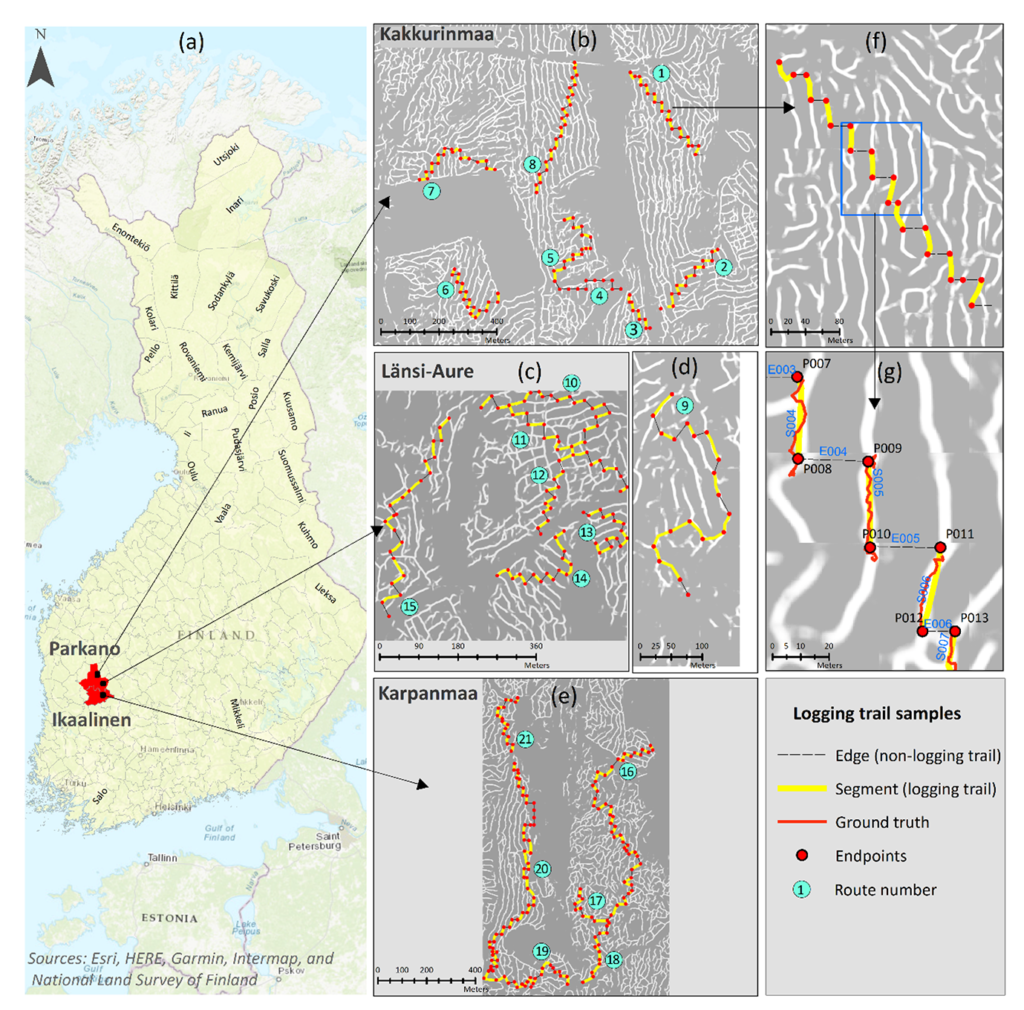Logging Trail Segmentation via a Novel U-Net Convolutional Neural Network and High-Density Laser Scanning Data

Logging trails are one of the main components of modern forestry. However, spotting the accurate locations of old logging trails through common approaches is challenging and time consuming. This study was established to develop an approach, using cutting-edge deep-learning convolutional neural networks and high-density laser scanning data, to detect logging trails in different stages of commercial thinning, in Southern Finland.
We constructed a U-Net architecture, consisting of encoder and decoder paths with several convolutional layers, pooling and non-linear operations. The canopy height model (CHM), digital surface model (DSM), and digital elevation models (DEMs) were derived from the laser scanning data and were used as image datasets for training the model. The labeled dataset for the logging trails was generated from different references as well. Three forest areas were selected to test the efficiency of the algorithm that was developed for detecting logging trails.
We designed 21 routes, including 390 samples of the logging trails and non-logging trails, covering all logging trails inside the stands. The results indicated that the trained U-Net using DSM (k = 0.846 and IoU = 0.867) shows superior performance over the trained model using CHM (k = 0.734 and IoU = 0.782), DEMavg (k = 0.542 and IoU = 0.667), and DEMmin (k = 0.136 and IoU = 0.155) in distinguishing logging trails from non-logging trails. Although the efficiency of the developed approach in young and mature stands that had undergone the commercial thinning is approximately perfect, it needs to be improved in old stands that have not received the second or third commercial thinning.